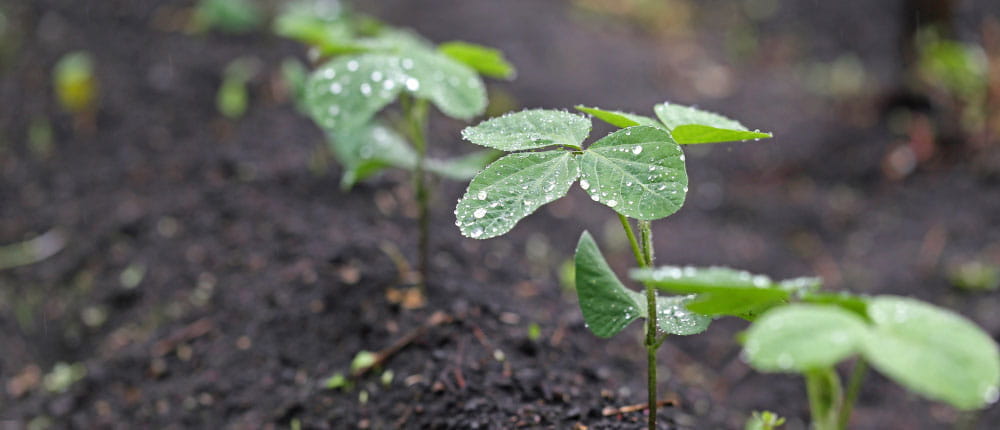Though these are important pathogens to protect against to ensure healthy, early season stand establishment, they are only part of the picture. Other seed and soil-borne fungi that cause seed decay, blight, and damping off, can significantly impact stand establishment and overall yield potential.
Rhizoctonia damping-off and root rot is caused by the soil-borne fungus Rhizoctonia solani. Rhizoctonia damping-off and root rot of soybeans can cause early season stand losses and premature yellowing in soybeans. Although infection of the roots can occur at any time, it is typically more damaging during the seedling damping off phase.
Seedling blight caused by fusarium is a fungal infection that can cause the seed or seedling to rot and die. Fusarium spp. are among the most persistent soil-borne fungal pathogens. Symptoms include patches of germination failure, and if the seedlings do germinate, they may not emerge, or they may emerge and then become brown and die. Other symptoms include stunted and yellow growth, or reduced root growth with brown spots on the roots and coleoptile.
Both Thiophanate-Methyl and Azoxystrobin provide additional systemic protection against rhizoctonia and seed decay, beyond a base protection of fludioxonil. However, there are key differences that should be considered.
Thiophanate-methyl, ST-Methyl 540 FS from Nufarm, provides a high level of rhizoctonia protection along with seed cleaning, particularly Diaporthe (Phomopsis) and provides a second mode of action against fusarium spp., when used in combination with fludioxonil. ST-methyl 540 FS would be better positioned in cooler growing environments, like the northern corn belt or in earlier planting conditions. ST-Methyl 540 FS delivers reliable, consistent early-season control against seed decay, seedling blight and seed-borne disease. It protects roots during critical development stages to improve stands and yield and can enhance the performance of other fungicides.
Azoxystrobin, Saxony 100 FS from Nufarm, also provides rhizoctonia protection and brings extra levels of pythium protection (40 additional strains) beyond a base oomycete treatment. It is important to note that the addition of azoxystrobin is better utilized in warm growing environments, specifically in the southern corn belt or later season planting. The xylem mobile penetration of systemic Saxony 100 FS powers excellent root uptake to control fungal pathogens across classes. The proven preventive and curative activity of Saxony 100 FS to curb costly seed and seedling disease, including Pythium damping-off, Rhizoctonia seedling blight, Fusarium, Aspergillus and more.
Seed and Seedling protection starts with choosing the right base seed treatment package including combining multiple modes of action of leading fungicides and insecticides. To increase yield protection, the grower must decide if additional products are needed depending on pest pressures. Pythium and phytophthora protection is often table stakes in a seed treatment package to get stand established, the second line of defense should provide systemic protection against fusarium and rhizoctonia to keep plants vigorous, and on track for the highest yield potential. A prescriptive seed treatment offering, such as STI Customized from CHS, can improve the performance of the overall seed treatment package by addressing local needs and yield potential.
For more information, visit Nufarm.com.

Digging deeper into soybean diseases
Often, when discussion of soybean seed and soil-borne pathogens arise, much of the conversation is driven by pythium and phytophthora.
Jan 31, 2024
Recent headlines
Seed treatments
Enhanced efficiency
Nitrogen management
Enhanced efficiency
Nitrogen management



